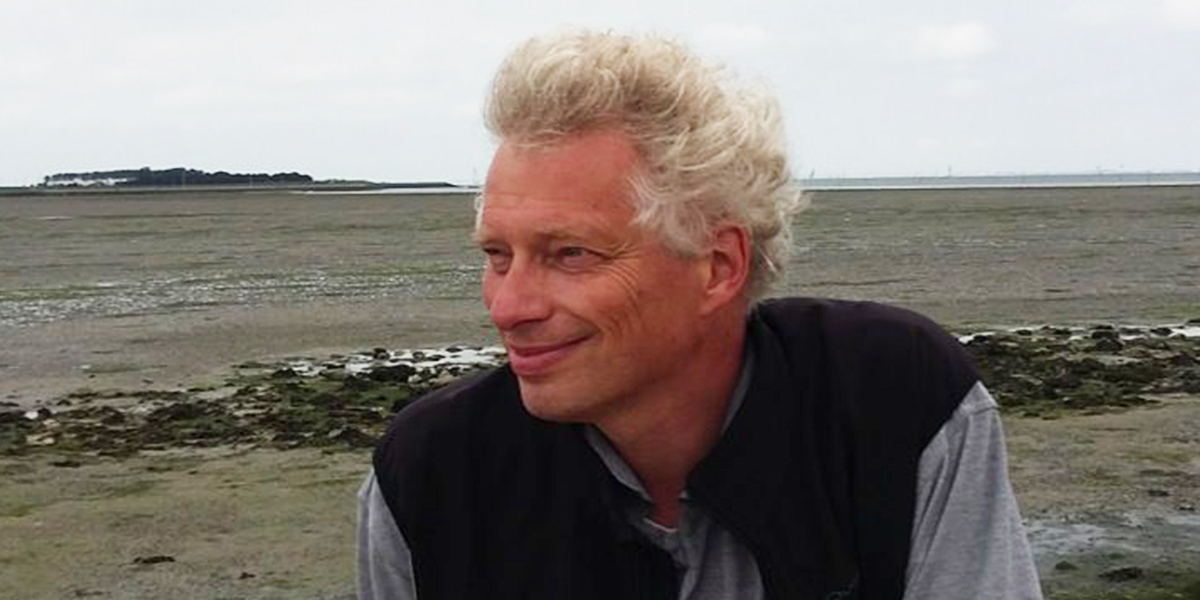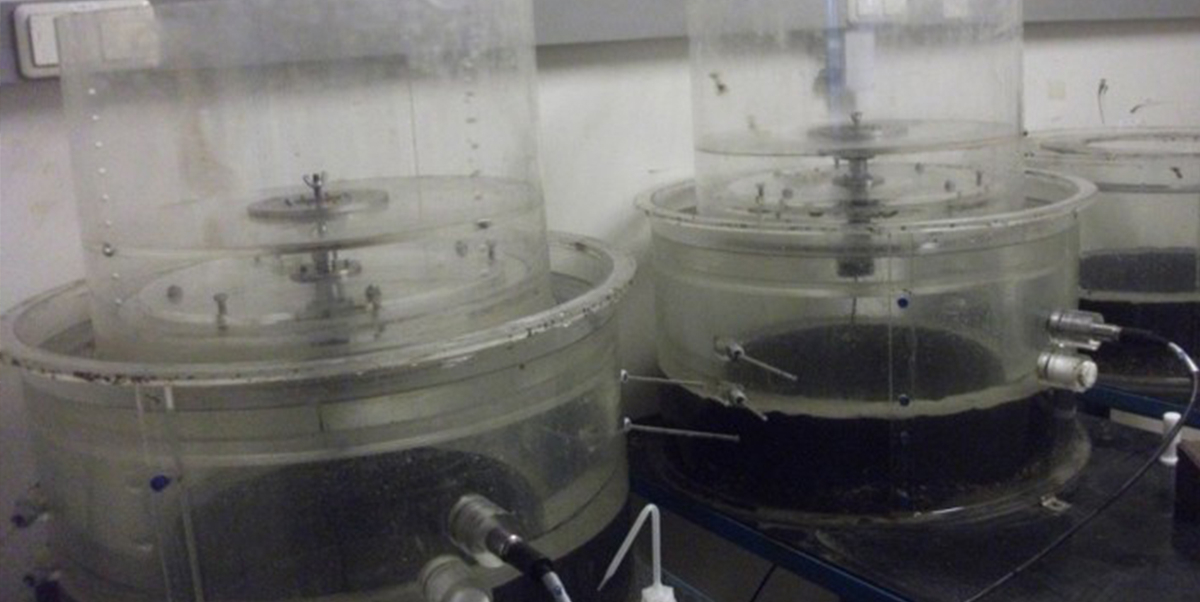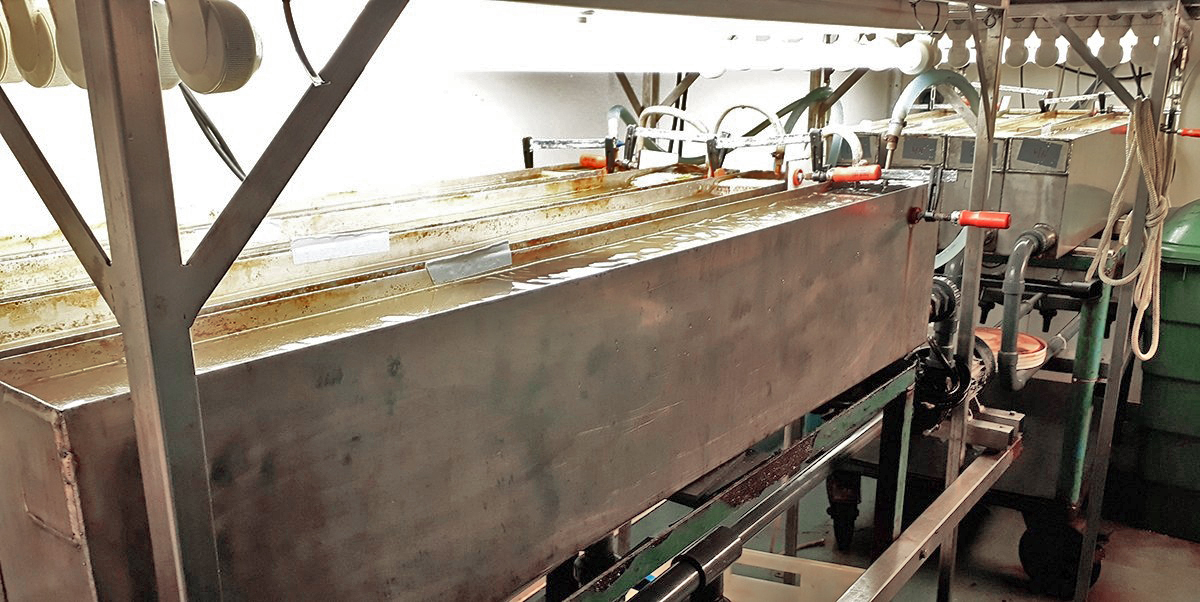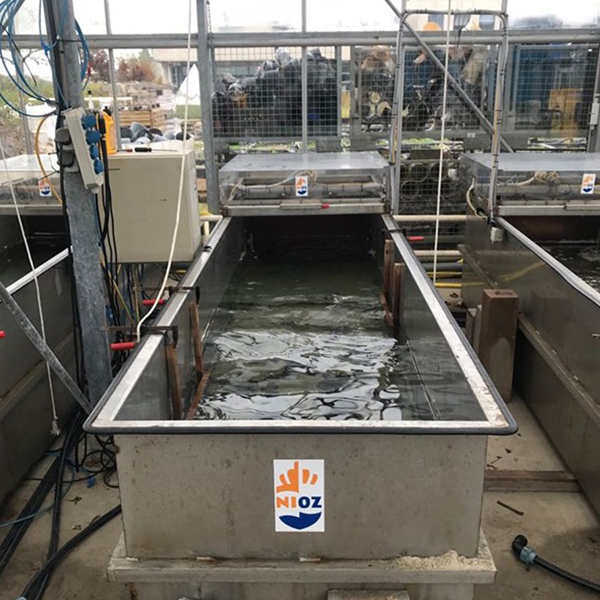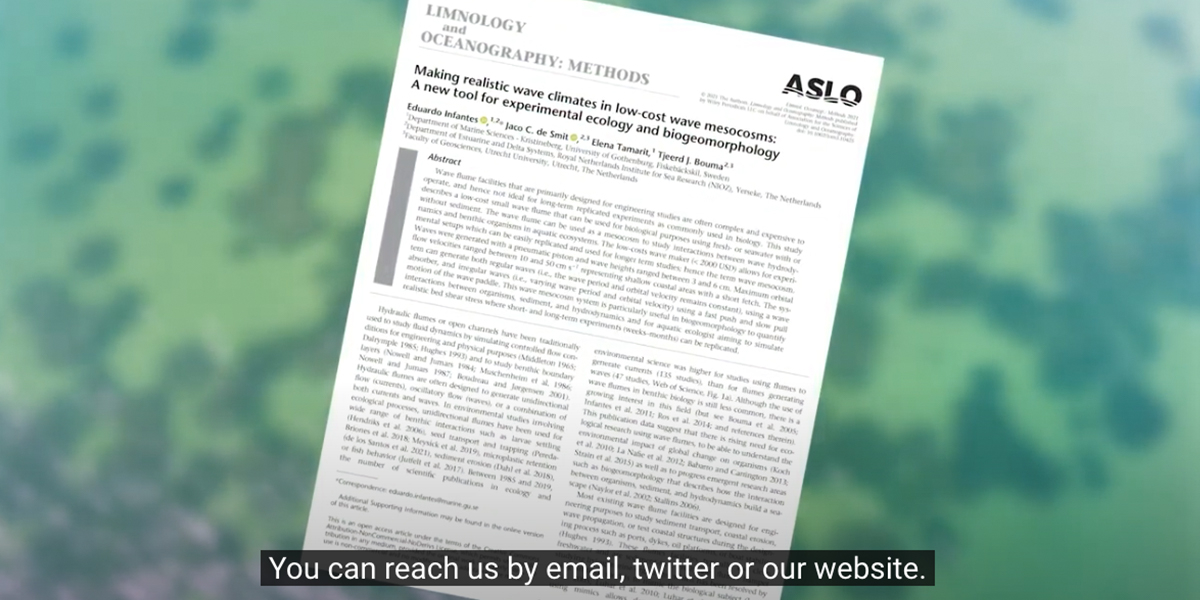Flume and wave mesocosms
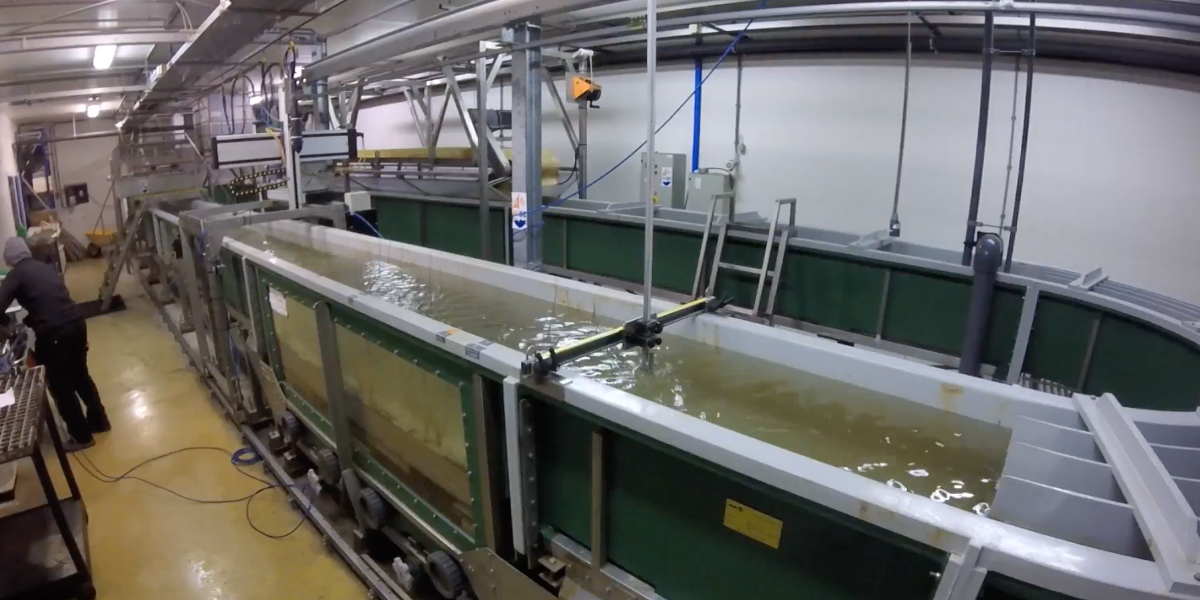
Studying the bio-physical interactions
Coastal and marine ecosystems are strongly influenced by hydrodynamic forces originating from tidal currents and waves. The expertise of Tjeerd Bouma and his team consists of studying these bio-physical interactions. The main studies are:
- How the forces originating from tidal currents and waves affect species performance, community structure and community interactions
- How marine and estuarine organisms alter the physical environment by changing hydrodynamic forces, thereby affecting sediment transport and pore-water fluxes
Flume systems
To study the biophysical interactions we use flume systems and wave mesocosms. A flume is like a wind tunnel that serves to control water movement by a combination of flow and waves. Ultimately, we aim to understand how the bio-physical interaction between the above mentioned items affects spatial development, functioning and resilience of the estuarine and coastal ecological landscape.
There are different types of flume systems for different types of questions. Some of the questions require organisms or communities to be exposed for a long-time to a given set of hydrodynamic conditions. This is to allow them to adjust their development to the hydrodynamic forcing. For these kinds of questions we have developed systems with relatively simple hydrodynamic controls, so that we can have replicates (mini-flumes, annular flumes and wave-mesocosms.
Other questions require short periods of high quality hydrodynamic measurements around living organisms. For these kinds of questions we have developed / are developing a range of flume systems, such as laboratory flumes with more advanced hydrodynamic conditions (racetrack flume), and field flumes with more limited hydrodynamic control (OsCar & MoBi-WAVE).
Wave mesocosms for experimental ecology
Wave flume facilities that are primarily designed for engineering studies are often complex and expensive to operate, and hence not ideal for long-term replicated experiments as commonly used in biology. This new tool with a low-cost small wave flume is designed by NIOZ technicians, in collaboration with Tjeerd Bouma and Eduardo Infantes (Marine Research Station, Kristineberg) can be used for biological purposes using fresh or seawater with or without sediment. The wave flume can be used as a mesocosm to study interactions between wave hydrodynamics and benthic organisms in aquatic ecosystems. The low-costs wave maker (less than 2000 USD) allows for experimental setups which can be easily replicated and used for longer-term studies; hence the term wave mesocosm. In the video below Eduardo Infantes presents the new tool.
If you are interested in using these instruments in your research, please contact Tjeerd Bouma by email (preferred). Tjeerd Bouma is a scientist specialised in understanding the dynamics of coastal ecosystems from a biophysical perspective, aimed at sustainable conservation & use. In urgent matters you can contact him directly.
T +31 (0)113 577 464
